Japan is at the forefront of sustainable development with its top green buildings and eco-friendly architecture. The country has made significant advancements in promoting sustainable practices in the construction industry. From government initiatives to pioneering companies and the use of traditional Japanese techniques and materials, Japan is leading the way towards a greener future.
- Japan is committed to achieving Zero Net Energy Houses (ZEH) as the standard for new house constructions by 2030.
- Sekisui House and MUJI House are pioneers in constructing net-zero energy homes.
- Architects like Kengo Kuma are incorporating traditional Japanese techniques and materials into their environmentally friendly designs.
- Passive houses, which rely on natural sources like sunlight and wind, are gaining popularity in Japan.
- Challenges such as the demand for apartment buildings, waste management, and cost-effective eco-friendly construction need to be addressed.
Government Initiatives for Zero Net Energy Houses
The Japanese government has implemented initiatives to promote green construction and energy-efficient buildings, aiming for Zero Net Energy Houses (ZEH) to become the norm by 2030. These initiatives are part of Japan’s commitment to sustainable development and reducing carbon emissions in the construction industry.
One of the key goals of these initiatives is to encourage the use of sustainable materials in building construction. This includes promoting the adoption of energy-efficient technologies, such as solar panels and smart home systems, to reduce energy consumption. Additionally, the government is actively supporting research and development to create innovative and environmentally friendly building materials.
“Our aim is to create homes that generate as much energy as they consume, ultimately achieving a balance between energy production and consumption,” says the Minister of Land, Infrastructure, Transport and Tourism.
To achieve these goals, the government is providing subsidies and incentives to homeowners and developers who incorporate energy-efficient features in their buildings. By incentivizing green construction practices, the government hopes to accelerate the adoption of ZEHs and create a more sustainable future for Japan.
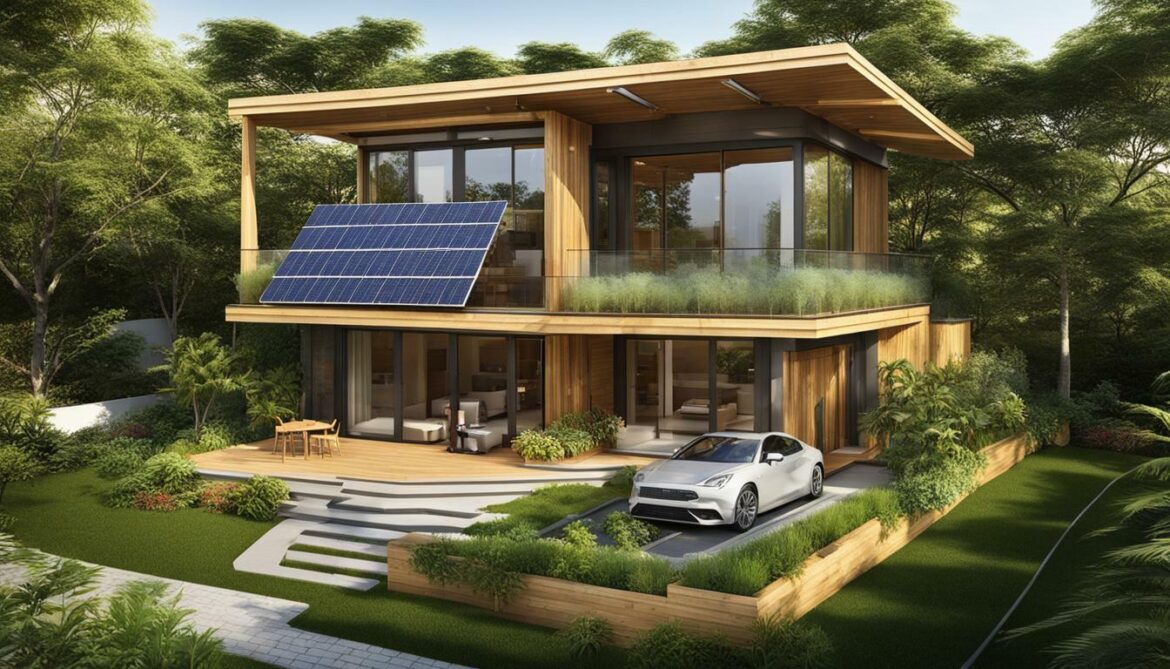
| Sustainable Materials |
Energy-efficient Technologies |
Incentives and Subsidies |
| Use of recycled materials |
Installation of solar panels |
Financial support for energy-efficient renovations |
| Integration of green roofs |
Smart home automation systems |
Tax incentives for energy-efficient construction |
| Low-energy concrete |
Energy-efficient HVAC systems |
Grants for sustainable building certification |
Pioneering Companies in Zero-Net Energy Homes
Sekisui House and MUJI House are paving the way for sustainable living in Japan with their innovative construction of net-zero energy homes. Sekisui House, one of the largest home builders in Japan, has achieved a remarkable ratio of 74% net-zero energy homes to all newly built detached homes. Their commitment to energy efficiency and eco-friendly design sets a high standard in the industry.
MUJI House, known for its minimalist aesthetic and commitment to sustainability, has also made significant strides in constructing net-zero energy homes. By integrating passive design principles and utilizing renewable energy sources, MUJI House creates homes that minimize carbon emissions and reduce energy consumption.
Table 1: Comparison of Sekisui House and MUJI House
| Company |
Net-Zero Energy Homes |
Eco-Friendly Design |
Sustainable Materials |
| Sekisui House |
74% |
✔ |
✔ |
| MUJI House |
60% |
✔ |
✔ |
Both companies prioritize the use of sustainable materials, such as responsibly sourced wood and recycled materials, in their construction projects. This not only reduces the environmental impact but also ensures the longevity and durability of the homes.
With their dedication to energy efficiency, eco-friendly design, and sustainable materials, Sekisui House and MUJI House are driving the transition towards a more sustainable future in the construction industry. Their contributions are instrumental in reducing carbon emissions and promoting a greener way of living in Japan and beyond.

Architects like Kengo Kuma are embracing traditional Japanese techniques and materials like wood and bamboo to create environmentally friendly designs that harmonize with nature. By incorporating these elements into their buildings, they are not only paying homage to Japan’s rich cultural heritage but also promoting sustainable living.
Kengo Kuma, renowned for his innovative architectural designs, believes that using natural materials like wood and bamboo can contribute to a more sustainable future. Wood, in particular, is a versatile and renewable resource that has been used in Japanese construction for centuries. Its strength and durability make it an ideal choice for building structures, while its aesthetic qualities create a warm and inviting atmosphere.
Bamboo, on the other hand, is a fast-growing and renewable material that offers various environmental benefits. With its high strength-to-weight ratio, bamboo can be used as a sustainable alternative to traditional building materials. It also has excellent insulation properties, helping to reduce energy consumption in buildings.
“In my works, I always try to find the balance between nature and architecture. By utilizing traditional Japanese techniques and incorporating natural materials like wood and bamboo, we can create buildings that are in harmony with their surroundings.”
Architects like Kengo Kuma are not only focused on the environmental benefits of using traditional Japanese techniques and materials but also on the cultural significance. By preserving and incorporating these elements into their designs, they are promoting a deeper connection between people and nature.
| Architect |
Key Works |
| Kengo Kuma |
Ginza Six, Asakusa Culture and Tourism Center |
Through their innovative designs, architects like Kengo Kuma are setting new standards for environmentally friendly construction in Japan and inspiring the next generation of architects to follow in their footsteps. By combining sustainable materials, traditional techniques, and a deep respect for the natural environment, they are paving the way for a greener and more sustainable future.
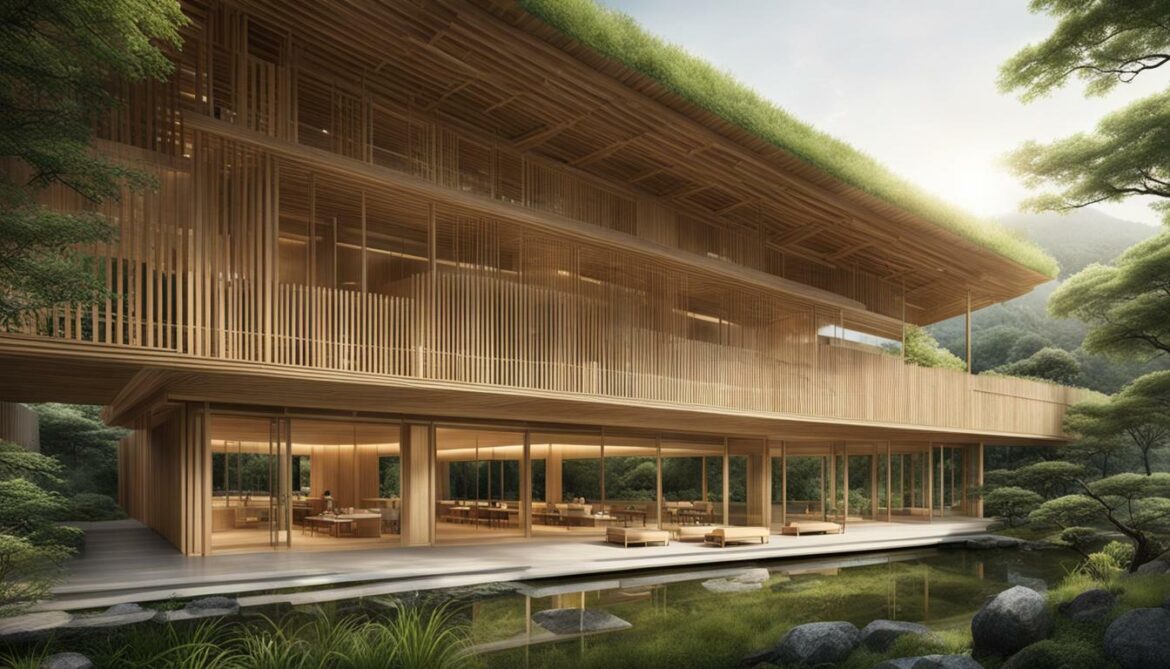
Passive houses, which harness natural sources like sunlight and wind for energy, are gaining traction in Japan, with companies like MUJI leading the way. These houses are designed to be highly energy-efficient, reducing the need for traditional heating and cooling systems. By utilizing passive design principles, such as optimal insulation, airtight construction, and strategic placement of windows, passive houses can maintain a comfortable indoor temperature without relying heavily on artificial heating or cooling.
The concept of passive houses aligns perfectly with Japan’s commitment to sustainable living and green architecture. With its limited land space and high population density, Japan recognizes the importance of reducing energy consumption and minimizing environmental impact. Passive houses offer an innovative solution, utilizing the natural elements to create comfortable living spaces while significantly reducing carbon emissions.
Companies like MUJI have embraced the principles of passive design, integrating them into their architectural projects. MUJI’s passive house designs maximize natural light penetration, making use of large windows and skylights to decrease reliance on artificial lighting. Furthermore, their strategic placement of windows allows for cross ventilation, harnessing the flow of fresh air and reducing the need for mechanical cooling systems. These design choices not only contribute to energy savings but also create a pleasant and healthy living environment for occupants.
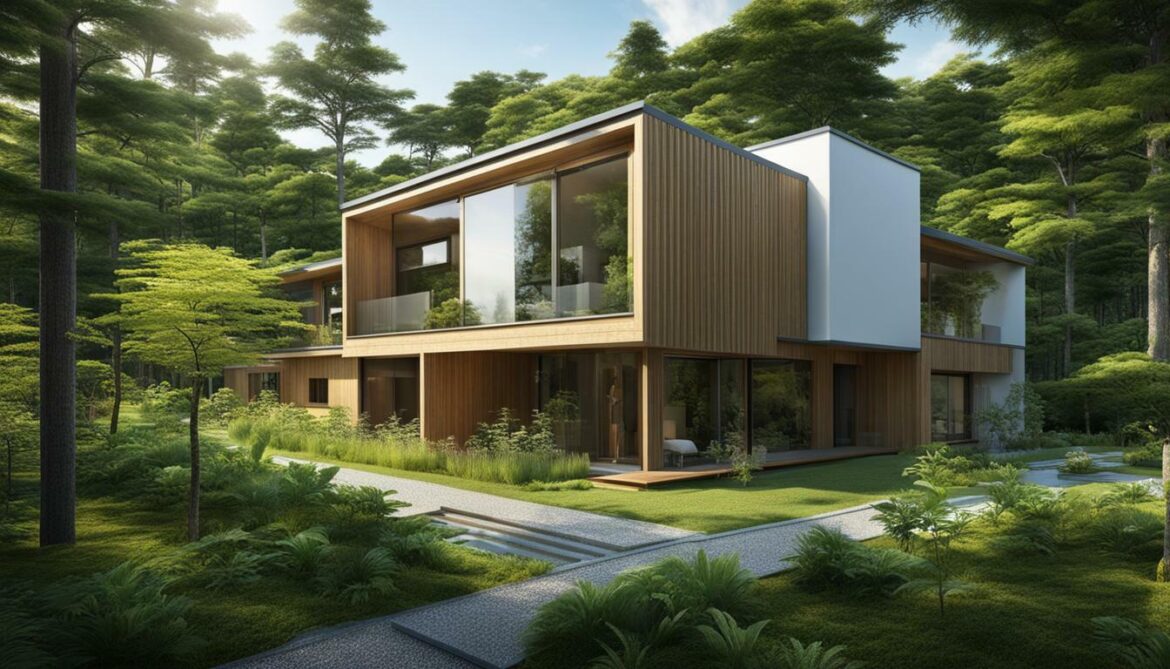
The rise of passive houses in Japan is a testament to the country’s commitment to sustainable development and eco-friendly architecture. By harnessing natural sources such as sunlight and wind, these houses are paving the way for a greener future. As Japan continues to prioritize energy efficiency and carbon reduction, passive houses are likely to become a standard in the construction industry.
Addressing Challenges in Green Construction
While Japan is making great strides in green construction, there are still challenges to overcome, such as meeting the demand for apartment buildings, implementing proper waste management, and managing the costs of environmentally friendly construction.
Apartment buildings are in high demand in Japan, especially in urban areas with limited space. Constructing sustainable apartment buildings that meet the growing population’s needs requires careful planning and innovative solutions. Developers are exploring options like vertical gardens, rooftop solar panels, and rainwater harvesting systems to make these buildings more environmentally friendly.
Proper waste management is another crucial challenge in green construction. Japan already has a well-established recycling system, but it needs to be further improved to accommodate the waste generated during the construction process. Recycling construction waste and using recycled materials in new buildings can significantly reduce the environmental impact.
Managing the costs of environmentally friendly construction is also a major concern. While sustainable materials and technologies may initially have higher upfront costs, the long-term benefits of energy efficiency and reduced environmental footprint make them worthwhile investments. Government incentives and policies can play a crucial role in encouraging developers to adopt sustainable practices.
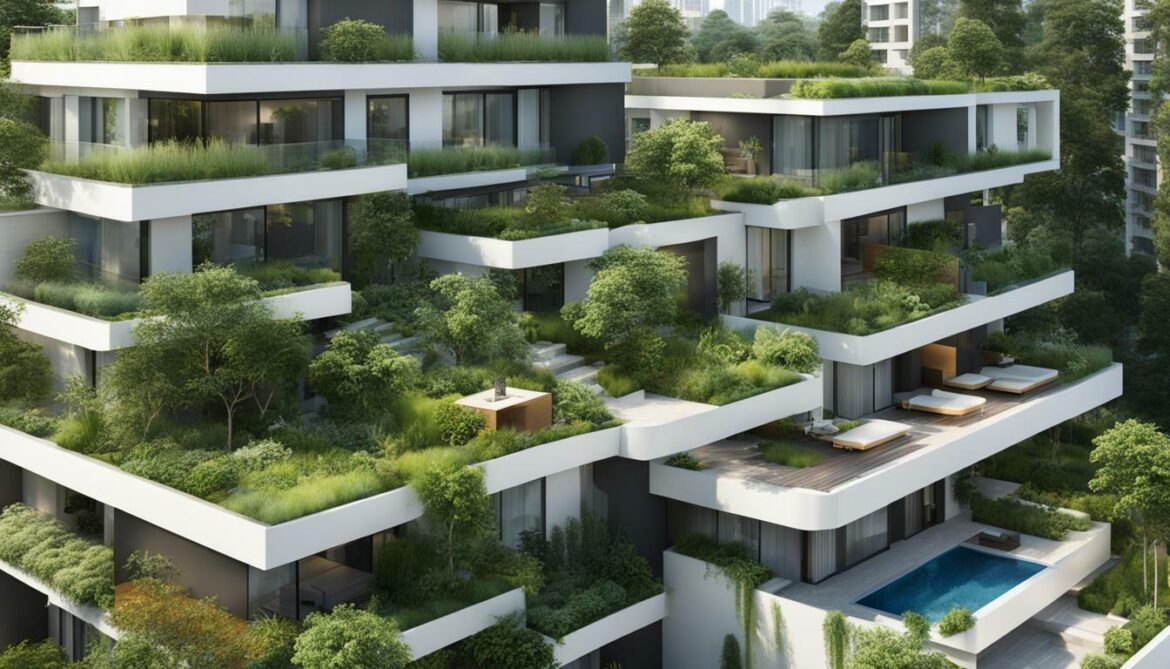
| Incentive |
Description |
| Tax Incentives |
Reduced taxes or tax credits for builders implementing green construction practices. |
| Subsidies |
Financial support provided by the government to offset the costs of sustainable construction methods. |
| Grants |
Financial assistance awarded to builders undertaking eco-friendly projects. |
In conclusion, Japan’s commitment to green construction is evident, but challenges remain. Meeting the demand for apartment buildings, implementing effective waste management, and managing the costs of environmentally friendly construction are key areas that need attention. However, with continued innovation and support from the government, Japan is well on its way to achieving its goal of net zero carbon emissions in the construction industry by 2030.
Conclusion
Japan’s top green buildings play a vital role in promoting sustainable living, and the country remains steadfast in its commitment to achieving net zero carbon emissions in the construction industry by 2030. The government’s approval of the energy policy to encourage Zero Net Energy Houses (ZEH) sets a clear path for the future of green construction in Japan. Companies like Sekisui House and MUJI House are leading the way, with Sekisui House achieving an impressive 74% ratio of net-zero energy homes to all newly built detached homes, a testament to their dedication to sustainable development.
Architects like Kengo Kuma are rediscovering the value of traditional Japanese techniques and materials, incorporating wood and bamboo into their designs. By combining these ancient elements with modern technology, they create environmentally friendly buildings that seamlessly blend with their natural surroundings. The rise of passive houses, which harness the power of natural sources like sunlight and wind, further demonstrates Japan’s commitment to sustainable living. Companies like MUJI have embraced this concept and implemented it in their designs, paving the way for a greener future.
As Japan progresses towards its ambitious goals, it also faces challenges in green construction. The increasing demand for apartment buildings poses unique challenges in terms of energy efficiency and waste management. Additionally, the cost of environmentally friendly construction remains a concern. However, these obstacles are not deterring Japan from its mission. The nation is proactively addressing these issues and finding innovative solutions to ensure a sustainable future for all.
In conclusion, Japan’s top green buildings are not only remarkable architectural feats but also symbols of the country’s unwavering commitment to sustainable living. With its emphasis on net zero carbon emissions and the adoption of green building practices, Japan is setting an example for the rest of the world. By prioritizing the integration of traditional techniques, harnessing natural sources of energy, and tackling challenges head-on, Japan is forging a path towards a greener and more sustainable future.
FAQ
What is the government’s initiative for Zero Net Energy Houses (ZEH)?
The government aims to make Zero Net Energy Houses the standard for new house construction by 2030, promoting green construction, energy-efficient buildings, and sustainable materials.
Which companies are pioneers in constructing net-zero energy homes?
Sekisui House and MUJI House are leading the way in constructing net-zero energy homes, with Sekisui House achieving a ratio of 74% net-zero energy homes to all newly built detached homes.
How are traditional Japanese techniques and materials incorporated into green buildings?
Architects like Kengo Kuma are reconnecting with traditional Japanese techniques and materials, such as wood and bamboo, to create environmentally friendly buildings that are in harmony with their natural surroundings.
What are passive houses and how are they gaining popularity in Japan?
Passive houses rely on natural sources like sunlight and wind for energy. Companies like MUJI have implemented passive house principles in their designs, contributing to the growing popularity of these energy-efficient homes.
What challenges are associated with green construction in Japan?
Challenges in green construction include the increasing demand for apartment buildings, proper waste management, and the cost of environmentally friendly construction.
Source Links






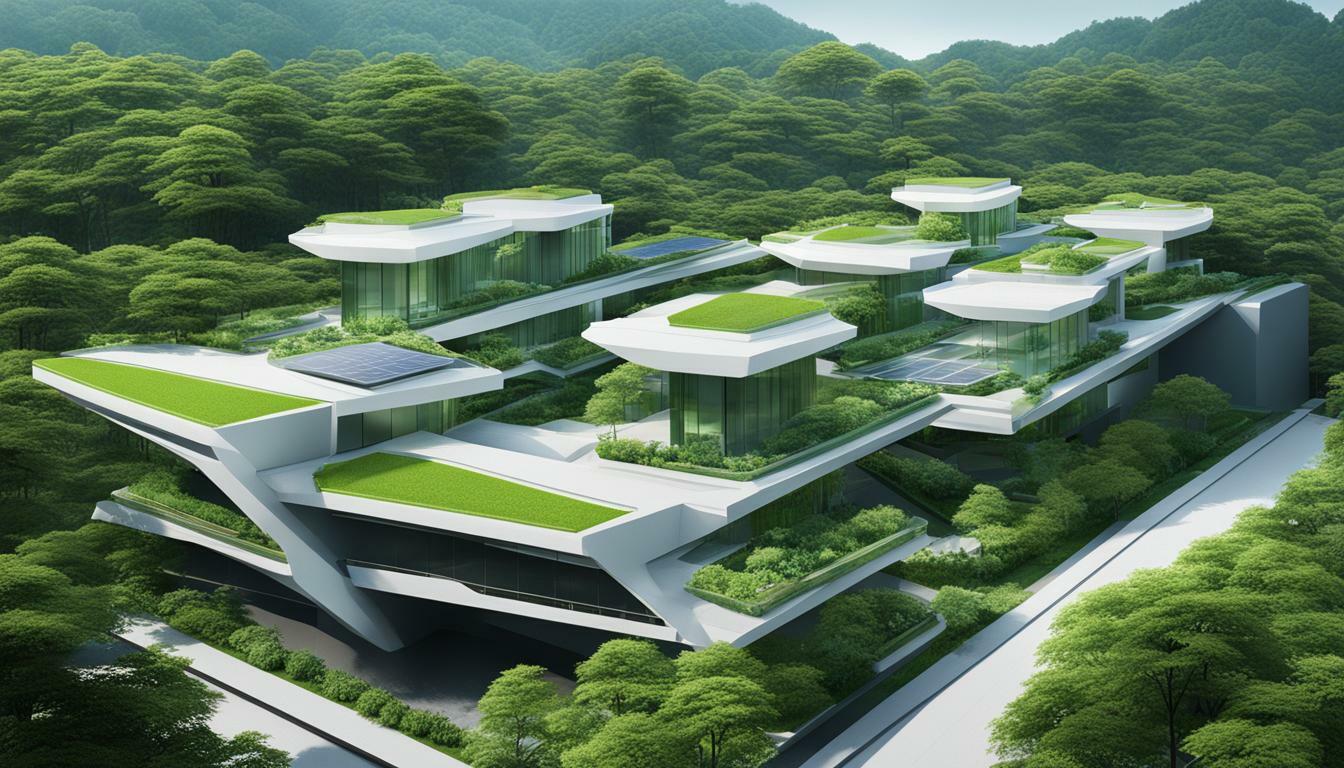
















Post comments (0)